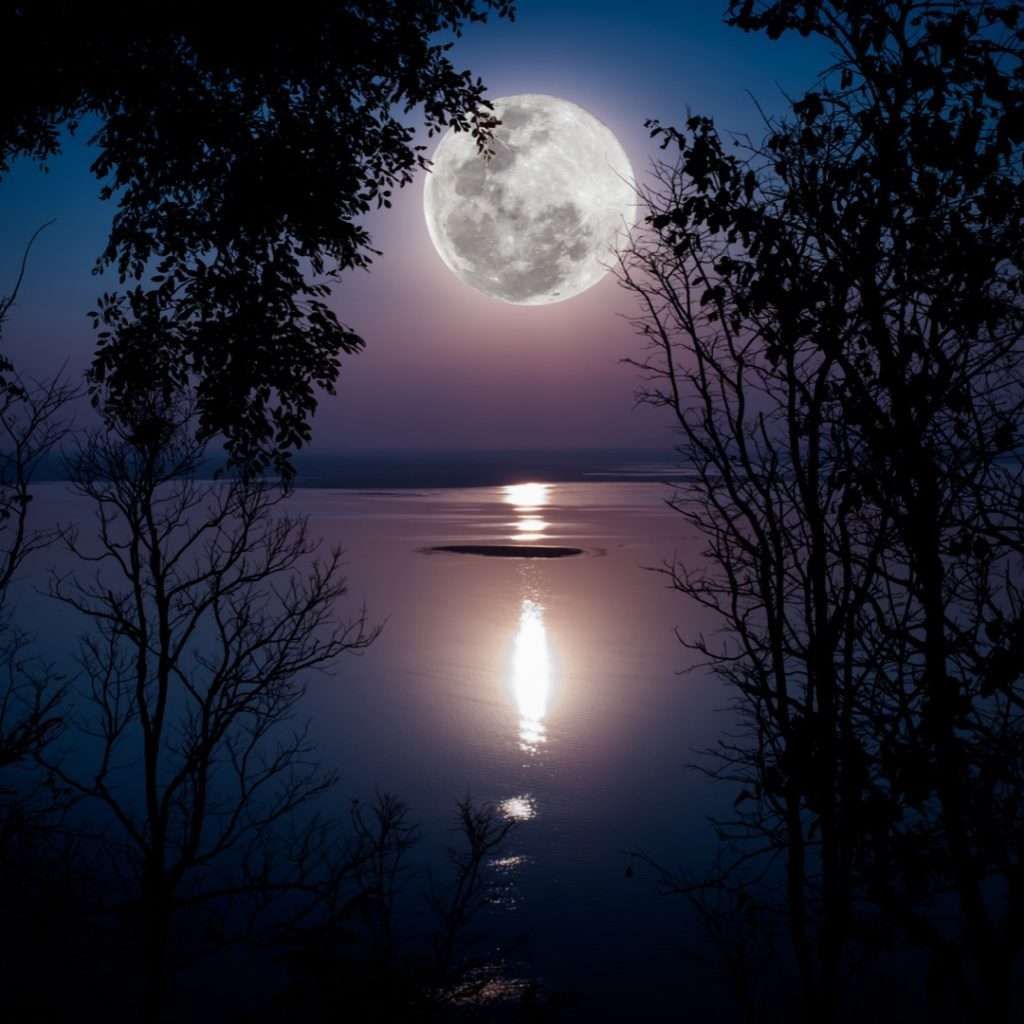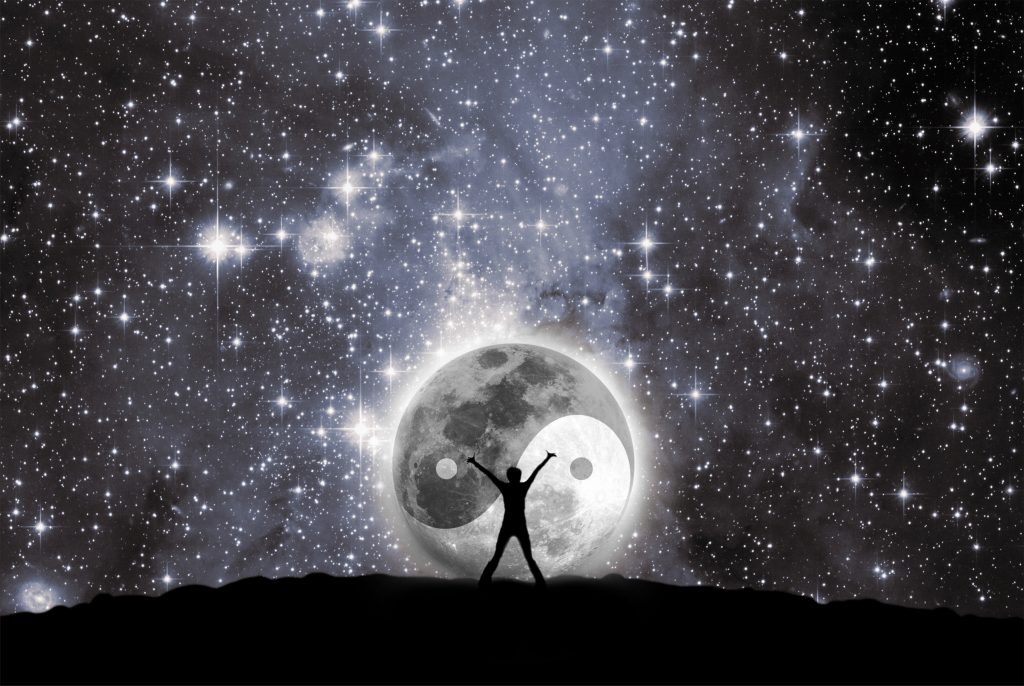Today is full moon and there is a recommendation in the world of Yoga, particular the system of Ashtanga, not to practice on that day – or on a new moon.
Some of my buddhist friends fast on the days when the moon is either new or full. I am not a buddhist, but I am also fasting today – an ayurvedic kind of fast, which isn’t really a fast but more of a mono-meal day, designed to ease your digestion and let your body catch up with metabolising some of the toxic load most of us carry in us, from consuming more than what our body (and mind) can digest.
But what does it have to do with the moon?
Well, lets have a look at two other branches of Vedic science that are intrinsically connected to traditional Yoga:
Ayurveda and Jyotish.
Ayurveda is the biological and medical system on which the therapeutic use of Yoga is based. To understand Yoga, to understand why the Ashtanga primary series for example is built up in the way it is, we need to understand Ayurveda first.
I am not going to go into the details of Ayurveda here (have a look at my book here (http://https://www.amazon.com/-/de/Sandra-Hayes/e/B08NY2QQG7/ref=aufs_dp_fta_dsk) if you would like a simple, easy to understand explanation of all of the basics).
Right now I just want to highlight one particular aspect that, in our society, often is neglected or ignored:
The practice of living in harmony with the natural rhythms of nature.
That means many things – it means the obvious, that we should sleep when it is dark and be awake when it is daylight, and that our lifestyle and diet is different according to the seasons, but it also means much more.
Our body very much works according to the amount of light that enters through our eyes and skin and this has an effect not only on our melatonin and other hormone levels, but on pretty much everything. The exchange of minerals for example inside a cell changes with the cycle of day and night – during the day, our cells hold sodium and calcium, while magnesium and potassium are outside of the cell, and during the night, sodium and calcium are pushed out and magnesium and potassium enter the cell through its membrane. This means that during the darker times, the body relaxes and releases toxins, while during the time of increased light, the body needs the extra sodium for increased nervous activity.
During extended daylight in the summer, of course, the body is even more active on a cellular level, and in the winter time, our body naturally slows down and needs more rest and sleep.
If we live against the natural tides of this ebbing and flowing energies, then we not only waste a lot of energy (like swimming against the stream) but we also go against our own body‘s intelligence. It is said in Ayurveda that most deseases are caused by our own crimes against wisdom and our body‘s natural, cosmic intelligence.
There is a reason why this internal rhythm is happening. If we don‘t let the body rest while it is dark, then we may allow a build up of sodium inside our cells, resulting in Vata or Pitta symptoms like dehydration, acidity and inflammation.
That‘s why traditionally in all cultures the times of the equinixes, the points of equilibrium, of stillness, the pivoting points of dominance of light over darkness (or the other way around) are used for detoxification and fasting. This practice supports the natural flow of energy and cellular intelligence of our bodies.
And the moon emmits light too, the kind of light that has a more subtle effect on us, but not any less powerful. As we know, the moon attracts water. Not just selected water, like the big oceans, but also the salty water our cells are bathed in at night. This IS the ocean inside of us. It is very much effected by the moon‘s light and its pull and its waxing and waning. During the waxing time of the moon, the cells use more energy to assimilate nutrients, and during the waning phase of the moon, it uses more energy to release toxins.
The points of the new moon and full moon are pivoting points.
Like after an inhale and exhale, there is a moment of stillness, also in the microcosmic world of our body, there is a point of stillness, where a shift in energy takes place.
If we can manage to tap into this energy of stillness, this liminal space, then we can really allign ourselves with our body‘s natural rhythms and the natural rhythms of the universe. We can support our body in its natural cycle of nourishment and detoxification.
But also on the macrocosmic level it makes sense to allign ourselves with the energy of the moon.
Jyotish, the science of light is one of the Vedic limbs that used to be studied before attempting to study the vedas, just so there is a basic understanding of the different kinds of cosmic influences. Surya, the sun for example, is the archetypel energy of the soul – that which shines by itself, the king in the heavenly drama of our lives. It is the centre of our solar system and it is that which sustains our lives, the energy, the strength. If we practice Surya Namaskara, or chant Surya mantras, in addition of course to living in allignment with the solare cycles, we can amplify all of the benefits of the solar energies.
Agni, the god of fire, is the archetypal energy of the transformative aspect of fire, meaning our digestive power and metabolisem (both mental and phyical).
And the moon. Chandra, in vedic mythology, is the queen of the heavens, the feminine aspect of our consciousness and of the universe. It is that which reflects the sun‘s light and illuminates the darkness. Chandra is the archetypal energy of the mind in general. The mindspace, Citta, that contains all of the capacities on perceiving the world through our senses, our emotions, our inner wisdom, all of that. Like the mind, the moon fluctuates, it waxes and wanes, it is sometimes more illuminated and sometimes less. The moon is always hungry for experiences, for sensual experiences. In vedic Mythology chandra is a charming, beautiful man, who has 27 wives who are all fighting over him. But he isn‘t just a player, he loves deeply. Out of the 27 wifes he has only one favorite. These 27 wifes are the Nakshatras, the 27 constellations of stars the moon passes through during one cycle. Roughly one constellation a night he visits, one wife he stays with each night and each of them gives him a different inspiration, a different mood. Some he gets on with better than others.

Today for example, he is in the nakshatra of Purva Ashadha, a venus ruled Nakshatra that also rules over water. So todays full moon may be particularly in the mood for romance or art or healing, making up after some kind of conflict, or something like that.
Either way, the moon is the macrocosmic image of the microcosm of our own inner world.
When the moon is full, no matter in which Nakshatra he happens to be, then the light in our mind also is at its fullest. We are illuminated. We are flooded with the light of our consciousness, reflections of our soul. We are maybe even literally flooded with the images that are arising from deep down in our soul.
Increased light is a good thing, but it all depends on the state of our individual minds. If if we shine a bright light through dirty windows, we may get distorted images and visions that might make us a little bit afraid, or unsettled. So, unless our mind is clear and strong and free from mental toxins, we could be haunted by delusions or overwhelming emotions. The best thing to do then, on a full moon, is to mentally fast, detoxify the mind, as well as the body. We do that best by cutting out all of the mental junkfood we often object ourselves to and meditate.
We could even meditate on the moon, or on a bright, clear light, so that our mind soon will take on that same illuminated quality. We could use a moon mantra like
Om Cham Chandraye Namaha.
Or
Om Shreem Som Somaye Namaha.
Either way, we do well to meditate more than usual on a day like this.
On a dark moon day, the opposite is true for the mind, but the same remedies will help the decreased mental energy – to meditate, and nourish ourselves by doing something like reading inspiring philosophy books, or poetry, and to spend time in nature.
So alltogether, if we think about alligning ourselves truly with the cosmic energies, which is an important part of all spiritual practice, we need to practice the stillness that comes with all pivotal points, like full and new moon.
On such days, we can put less emphasis on an energetic physical practice and more on a practice of stillness and meditation and mental clarity. Maybe even Yoga Nidra, Yin Yoga, inner journeys, journalling or something similar are helpful.
In addition, it would be a good day for fasting or at least eating only very light and easy to digest meals with only a few ingredients.
It is good to make it a day of rest for the mind, the body and our digestion. A day that we can use to consciously to connect with the moon. Meditating on it, taking a walk near water and looking at the moon, etc.
Maybe a special moon ritual.
All of these things are part of living an ayurvedic lifestyle, which IS a yogic lifestyle.
The achievement of any one posture like lotus or Marichyasana D isn‘t going to make us happier, healthier, more joyful and compassionate humans. But the practice of mindfulness, respect for our bodies and the universal cosmic forces and the recognition that we ARE a microcosm of the universe, is.

(to book a Vedic Astrology reading or an Ayurvedic consultation go to www.ayuyoga.ie)

